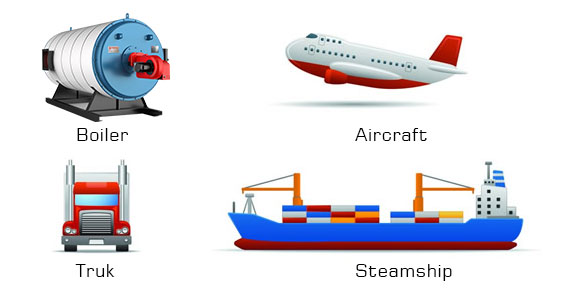What is biodiesel application?
Date:2014-11-11 15:38:05 Cooking oil machine FAQ /Give me the price / Leave a message- Tel: 0086-371-5677 1823
- Whatsapp/Cel: 0086 135 2662 7860
- Email: market@doinggroup.com

Biodiesel Application
Biodiesel can be used in pure form (B100) or may be blended with petroleum diesel at any concentration in most injection pump diesel engines. New extreme high-pressure (29,000 psi) common rail engines have strict factory limits of B5 or B20, depending on manufacturer. Biodiesel has different solvent properties than petrodiesel, and will degrade natural rubber gaskets and hoses in vehicles (mostly vehicles manufactured before 1992), although these tend to wear out naturally and most likely will have already been replaced with FKM, which is nonreactive to biodiesel. Biodiesel has been known to break down deposits of residue in the fuel lines where petrodiesel has been used. As a result, fuel filters may become clogged with particulates if a quick transition to pure biodiesel is made. Therefore, it is recommended to change the fuel filters on engines and heaters shortly after first switching to a biodiesel blend.
a> Railway usage
Biodiesel locomotive and its external fuel tank at Mount Washington Cog Railway.British train operating company Virgin Trains claimed to have run the UK's first "biodiesel train", which was converted to run on 80% petrodiesel and 20% biodiesel.The Royal Train on 15 September 2007 completed its first ever journey run on 100% biodiesel fuel supplied by Green Fuels Ltd. His Royal Highness, The Prince of Wales, and Green Fuels managing director, James Hygate, were the first passengers on a train fueled entirely by biodiesel fuel. Since 2007, the Royal Train has operated successfully on B100 (100% biodiesel).Similarly, a state-owned short-line railroad in eastern Washington ran a test of a 25% biodiesel / 75% petrodiesel blend during the summer of 2008, purchasing fuel from a biodiesel producer sited along the railroad tracks. The train will be powered by biodiesel made in part from canola grown in agricultural regions through which the short line runs.
Also in 2007, Disneyland began running the park trains on B98 (98% biodiesel). The program was discontinued in 2008 due to storage issues, but in January 2009, it was announced that the park would then be running all trains on biodiesel manufactured from its own used cooking oils. This is a change from running the trains on soy-based biodiesel.
In 2007, the historic Cog Railways added the first biodiesel locomotive to its all-steam locomotive fleet. The fleet has climbed up the Mount Washington in New Hampshire since 1868 with a peak vertical climb of 37.4 degrees.
On 8 July 2014, Indian Railway Minister announced in Railway Budget that 5% bio-diesel will be used in Indian Railways' Diesel Engines.
b>Aircraft use
A test flight has been performed by a Czech jet aircraft completely powered on biodiesel. Other recent jet flights using biofuel, however, have been using other types of renewable fuels.
On November 7, 2011 United Airlines flew the world's first commercial aviation flight on a microbially derived biofuel using Solajet™, Solazyme's algae-derived renewable jet fuel. The Eco-skies Boeing 737-800 plane was fueled with 40 percent Solajet and 60 percent petroleum-derived jet fuel. The commercial Eco-skies flight 1403 departed from Houston's IAH airport at 10:30 and landed at Chicago's ORD airport at 13:03.
c>As a heating oil
Biodiesel can also be used as a heating fuel in domestic and commercial boilers, a mix of heating oil and biofuel which is standardized and taxed slightly differently from diesel fuel used for transportation. It is sometimes known as "bioheat" (which is a registered trademark of the National Biodiesel Board [NBB] and the National Oilheat Research Alliance [NORA] in the U.S., and Columbia Fuels in Canada). Heating biodiesel is available in various blends. ASTM 396 recognizes blends of up to 5 percent biodiesel as equivalent to pure petroleum heating oil. Blends of higher levels of up to 20% biofuel are used by many consumers. Research is underway to determine whether such blends affect performance.
d>Cleaning oil spills
With 80-90% of oil spill costs invested in shoreline cleanup, there is a search for more efficient and cost-effective methods to extract oil spills from the shorelines. Biodiesel has displayed its capacity to significantly dissolve crude oil, depending on the source of the fatty acids. In a laboratory setting, oiled sediments that simulated polluted shorelines were sprayed with a single coat of biodiesel and exposed to simulated tides. Biodiesel is an effective solvent to oil due to its methyl ester component, which considerably lowers the viscosity of the crude oil. Additionally, it has higher buoyancy than crude oil, which later aids in its removal. As a result, 80% of oil was removed from cobble and fine sand, 50% in coarse sand, and 30% in gravel. Once the oil is liberated from the shoreline, the oil-biodiesel mixture is manually removed from the water surface with skimmers. Any remaining mixture is easily broken down due to the high biodegradability of biodiesel, and the increased surface area exposure of the mixture.
e>Biodiesel in generators
Biodiesel is also used in rental generators
In 2001, UC Riverside installed a 6-megawatt backup power system that is entirely fueled by biodiesel. Backup diesel-fueled generators allow companies to avoid damaging blackouts of critical operations at the expense of high pollution and emission rates. By using B100, these generators were able to essentially eliminate the byproducts that result in smog, ozone, and sulfur emissions. The use of these generators in residential areas around schools, hospitals, and the general public result in substantial reductions in poisonous carbon monoxide and particulate matter.
